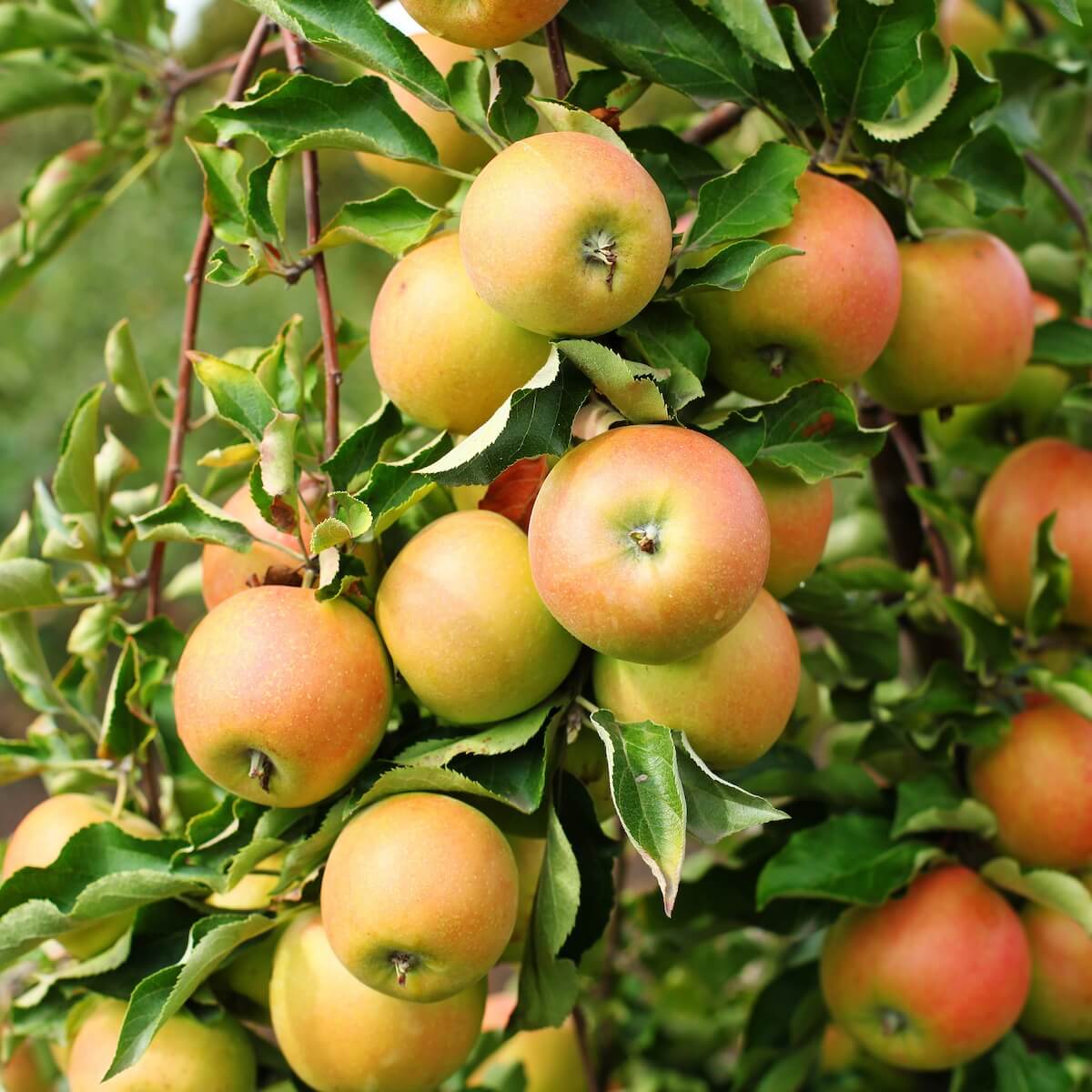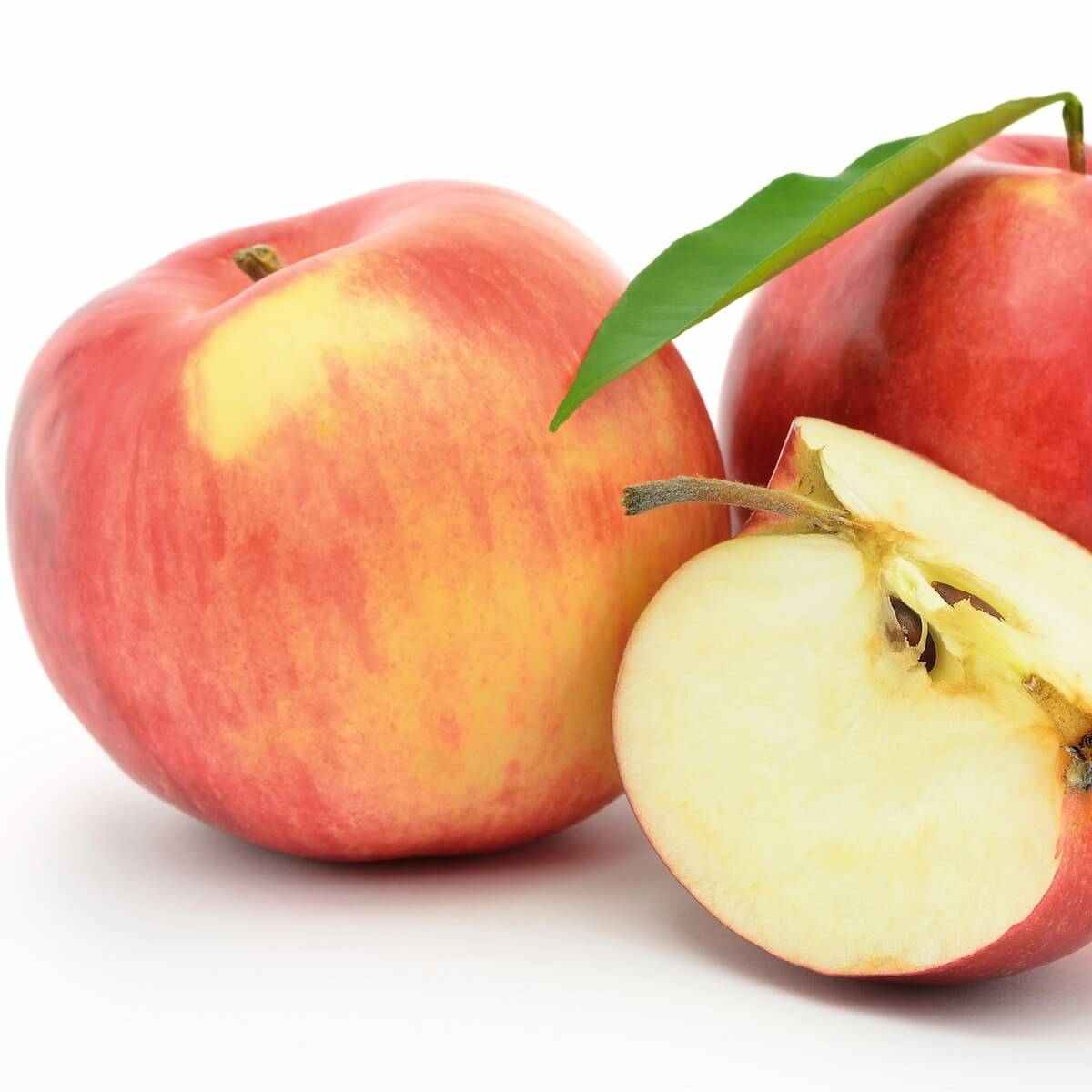
Position
- Requires a sunny, sheltered position with at least 6 hours of direct sunlight daily
- Protect from strong winds to prevent damage to blossom and fruit
- Avoid frost pockets by planting on slightly elevated ground or near a south-facing wall
Hardiness
- Hardy down to -15°C (5°F)
- Suitable for typical UK winters when adequately sited and established
Soil
- Thrives in moist, well-drained fertile soil
- Adapts to loamy, clay or sandy soils if enriched with organic matter
- Avoid waterlogged conditions
- Grows best in neutral to slightly acidic soil
- Optimal pH range between 6.0-7.0
- Can tolerate mildly alkaline conditions
- Grab a soil test kit and ensure the perfect conditions for growth
Height
- Typically reaches 3.5-4.5 metres (11-15 feet) depending on rootstock
- Can be maintained smaller with regular pruning
Seasons of Interest
- Beautiful pink-white blossoms appear in mid-spring (April)
- Attractive green foliage throughout summer
- Leaves turn golden yellow in autumn before falling
- Large, striped red-gold fruits ripen in October
Additional Notes
- Not self-fertile – needs a compatible pollination partner from the same flowering group
- Large fruits have excellent flavour and store well until January/February
- Regular winter pruning is required to maintain shape and encourage fruiting
- Produces heavy, reliable crops once established
- Best harvested when fruits twist easily off the branch
- Apply a balanced fertiliser in early spring and mulch annually
- Fruit thinning in June improves the size and quality of remaining apples
- May need a support system due to the heavy cropping nature
How to Grow a Apple Jonagold - The Complete Guide
The Jonagold apple is a fantastic choice for anyone growing a versatile and flavourful apple. A cross between the Jonathan and Golden Delicious varieties combines sweetness with a hint of tartness. This guide will explore everything you need to know about growing a Jonagold apple tree, from planting and pollination to harvesting and care.
What Makes the Jonagold Apple Special?
Apple Jonagold is known for its large size, crisp flesh, and aromatic flavour. It has a thin skin flushed with red, making it both attractive and tasty. This apple variety is perfect for eating fresh off the tree, cooking, or juicing.
How to Plant a Jonagold Apple Tree
Choosing the Right Location
To grow a healthy Jonagold apple tree, plant it in a sheltered, sunny position with well-drained soil. The ground should be moist but not waterlogged. Before planting, enrich the soil with well-rotted manure or garden compost to provide essential nutrients.
Planting Steps
- Dig a planting hole twice as wide as the tree’s root ball.
- Position the tree so that the base of the tree is level with the ground.
- Backfill with soil, gently firming it down.
- Fasten the tree with a stake to provide support.
- Water thoroughly after planting.
What Are the Pollination Requirements for a Jonagold Apple Tree?
Jonagold is a triploid apple variety that requires two suitable pollination partners to produce fruit. It belongs to pollination group 3 and cannot pollinate other apple trees. Ideal pollinators include Gala apples, Honeycrisp, and other mid-season apple varieties. Please check out my article here for more information on Apple pollinating groups.

How to Care for a Jonagold Apple Tree
Pruning and Maintenance
Regular pruning helps maintain a strong structure and encourages fruit production. Follow these tips:
In the first three years, remove weak or crossing branches to form the frame of the tree.
Each winter, thin out overcrowded branches and remove dead wood.
Keep the highest side branch as the leader to ensure balanced growth.
Protecting Against Pests and Diseases
Jonagold apple trees can be susceptible to apple scab. To minimise the risk:
Ensure good airflow by spacing trees appropriately.
Remove fallen leaves and debris.
Choose disease-resistant rootstocks like MM106 for added protection.
When and How to Harvest Jonagold Apples
Jonagold apples are ready for harvesting by mid-October. The fruit should be fully ripe with a rich, aromatic taste. Once picked, these apples store well in a cool, dry place.
Why Choose Jonagold Apples?
- Large apples with a crisp texture and rich flavour.
- Ideal for eating, cooking, and making juice or dry preserves.
- An excellent choice for commercial growers and home gardeners alike.
From Darren’s Patch
I haven’t grown Jonagold myself (yet!), but it’s always stood out to me for its bold size and incredible flavour. It strikes a lovely balance — sweet and sharp, with a crisp bite that makes it perfect for fresh eating, baking, or juicing. I’ve tasted it from a local orchard and remember thinking, “Now that’s an apple.” If you’ve got the space for a larger tree and can plant a couple of pollination partners nearby, it’s a brilliant choice for the garden. The fact that it stores well is a bonus too — nothing like dipping into your apple stash in the middle of winter. If I added another apple to my dream orchard, Jonagold would be near the top of the list.
![]()
Key Points to Remember:
- Jonagold apples are a cross between Jonathan and Golden Delicious
- They require pollination partners from pollination group 3
- Plant in a sunny, sheltered spot with well-drained soil
- Prune regularly to maintain a strong structure
- Harvest in mid-October when fully ripe
- Ideal for fresh eating, baking, and juicing
Growing a Jonagold apple tree is a rewarding experience. It offers delicious fruit and is a beautiful addition to any orchard or garden. With the right care, you can enjoy an abundant harvest year after year.
To see the RHS article, please click here.
Want to learn about other apple varieties? Read about Apple James Grieve here.
For more information on Fruit for your garden, please click here.
Frequently Asked Questions
Q: What are Jonagold apples, and what makes them special?
A: Apple Jonagold, developed at Cornell University, is a cross of Golden Delicious and Jonathan apples. They are known for their large size and perfect balance of sweetness and tartness, making them a favourite for eating fresh and cooking.
Q: How do I plant Jonagold apple trees?
A: When planting a Jonagold apple tree, choose well-drained soil in a sunny position. Please ensure the ground is moist and consider adding well-rotted manure or compost to improve soil quality. The best time to plant is typically mid-October.
Q: Are Jonagold apple trees self-fertile?
A: No, Jonagold apple trees are not self-fertile. They are triploid, requiring two other compatible apple trees nearby for successful pollination. Without suitable pollinators, they will produce little to no fruit.
Q: What do Jonagold apples taste like?
A: Jonagold apples have a delightful mix of sweetness and acidity. Their flesh is crisp, juicy, and aromatic, making them excellent for eating fresh or adding a tangy flavour to cooked dishes.
Q: How large do Jonagold apples grow?
A: Jonagold apples are among the largest apple varieties, producing big, juicy fruit. This is an excellent choice if you enjoy large apples with a rich flavour!
Q: What conditions do Jonagold apple trees need?
A: These deciduous trees thrive in well-drained soil and prefer a sunny location. While they can tolerate different climates, they require regular care to ensure healthy growth and high-quality fruit.
Q: How do I care for my Jonagold apple tree?
A: Proper care includes regular watering, especially during the first three years while the roots are established. Feeding in spring with a balanced feed will support strong growth. Pruning is also essential—focus on shaping the tree by maintaining six main branches for good air circulation and fruit development.
Q: When can I expect to harvest Jonagold apples?
A: Jonagold apples are typically ready to harvest from mid-October. Look for a rich red and yellow colouring and check that the apples come away easily with a gentle twist.
Q: Are there any reviews on Jonagold apples?
A: Yes! Jonagold apples are highly praised for their sweet-tart flavour and crisp texture. Thanks to their versatility and excellent taste, they are widely recommended for fresh eating and cooking.
Q: Where can I buy a Jonagold apple tree?
A: Jonagold apple trees are available at garden centres and online retailers. Choose a healthy tree suited to your growing conditions for the best results.
